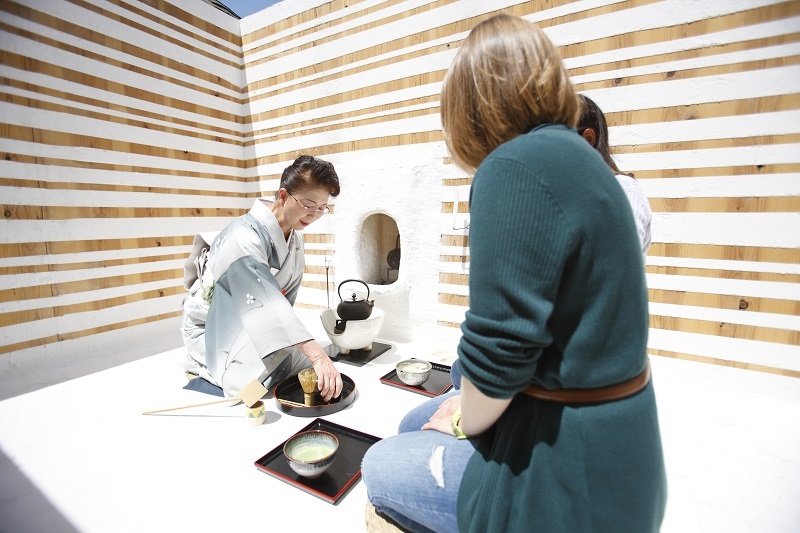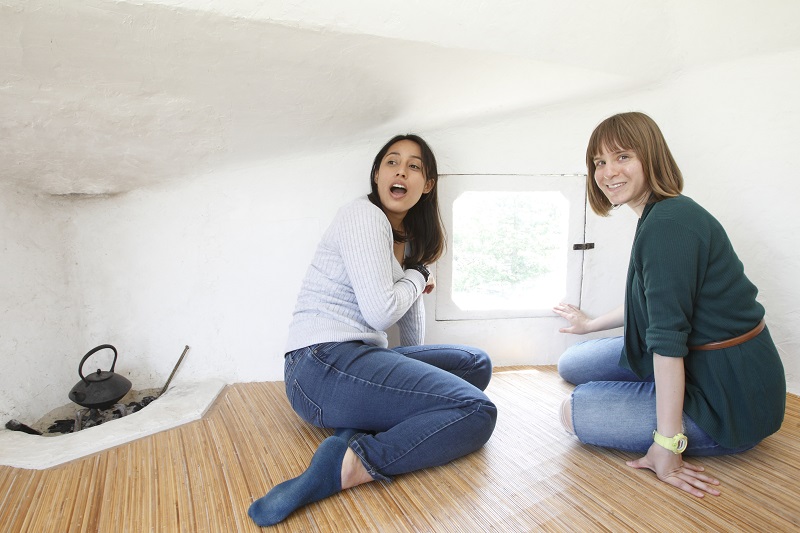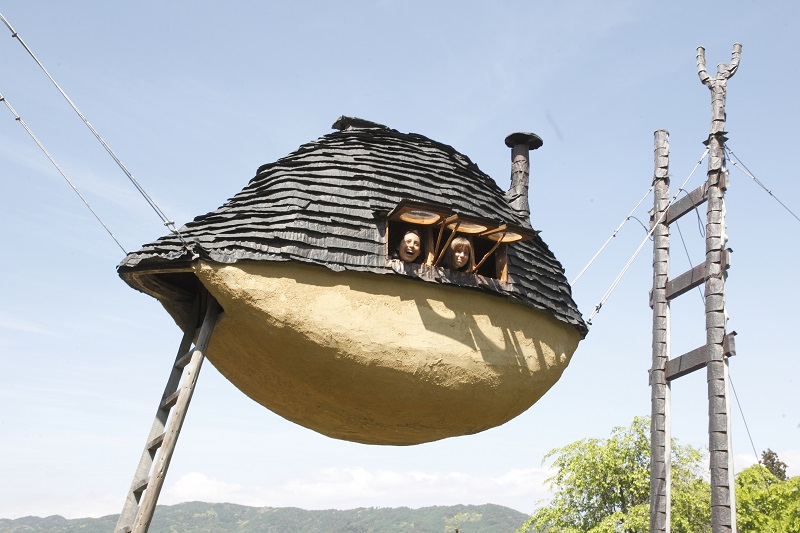A Tour of Fujimori Terunobu's Quirky Tea Houses

Explore Fujimori Terunobu’s imaginative architecture.
Climb to the too-high tea house and have a casual tea ceremony inside the too-low tea house.
Chino is the birthplace of architect Fujimori Terunobu, whose fairytale-like architecture has earned him worldwide recognition. The city, though, isn’t only his hometown but also the place of origin of his architecture. Here, in a village between the two upper shrines of Suwa Taisha are four dreamlike buildings that are sure to leave you stunned. One of them, Takasugi-an (the too-high tea house,) made it into the Time's "top 10 precarious buildings."
As a rule, except for Jinchokan Moriya Historical Museum, the buildings can only be seen from the outside as they are the architect's private property. However, by joining this tour, you have exclusive access to all four. You can even have tea inside one of the three tea houses.
Explore the sacred site of Maemiya, the oldest of Suwa Taisha's four shrines

The tour starts at Suwa Taisha, an ancient shrine where Nature worship still has a central role in the community's spiritual life. A visit to a shrine during an architecture tour may seem out of place, but this sanctuary, which is located a few steps away from his paternal home, came to play a big part in Fujimori’s debut as an architect.
The guide will show you the highlights of the shrine and talk about its unique history in a nutshell. At Maemiya, it is still possible to breathe the atmosphere of mysticism that characterizes Suwa animism. Every key point inside the sanctuary is marked by magnificent centenarian trees, and ablutions are performed at a mountain stream. After experiencing this shrine, it is not hard to see where Fujimori's interest in nature might come from.
A visit to Jinchokan Moriya Museum

From Maemiya, you will head toward the site of Fujimori’s architecture. To get there, you will take a backroad, an ancient trail named Kamakura michi that crosses the woods behind the shrines. During the 15-minute walk, you will hear about the friendship between Fujimori and the last member of the Moriya family, an influential household who played a fundamental role in Suwa’s religious scene for generations. Originally shamanic figures who acted as intermediaries with the Spirit of Nature Mishaguchi and later high-ranking priests known as Jinchokan, who performed sacred rituals for Suwa Grand Shrine, the Moriya family molded the history of the region. The Jinchokan Moriya Historical Museum was built in 1991 for the preservation and display of the over 1600 documents collected by this family over the centuries.
At first, Fujimori, who back then was a professor of the history of architecture, was only asked to select an architect for the project. However, too attached to the family and the local history they represented, he failed to find a candidate he considered up to the task. As a result, he made the life-changing choice to become an architect to work on the museum himself.

The final design of the Jinchokan museum is a tribute to local culture and shows that special attention to nature that characterizes all of Fujimori's architecture.
The guide will show you the museum inside out, explaining both its historical and architectural importance. He/she will also present some of Fujimori's sketches that illustrate the architect's thinking process while coming up with the concept for the building. *The entrance fee to the museum (JPY 150 per person) is not included in the price and needs to be paid separately.
Climb up to the too-high tea house

Your inner child will get excited at the sight of the fantastical architecture of the tea houses. First, you will go into the flying mud house, a blowfish-like tea house suspended in midair. Clambering up the ladder to the narrow entrance is quite thrilling and will make you forget about your worries, fulfilling one of the primary roles of tea houses. After that, you will climb to the too-high tea house, which is perched on top of two chestnut trees.

Last but not least, you will sneak into hikusugi-an, the too-low tea house, that looks like a modern Jomon pit dwelling. A local tea ceremony teacher clad in kimono will be waiting for you inside with a steamy cup of maccha and sweets.

The tour is private and is organized upon request.
Please note that only children over the age of 13 can enter the flying mud house and the too-high tea house.
Update:2020/06/25
Fujimori Terunobu Tea House Tour
| Operating Period | April to November |
|---|---|
| Time | 9:30~12:30 or 14:00~17:00 depending on the season |
| Reservations | Necessary (via Chino Tabi Website) |
| Price | Adult (ages 12+): With 2 participants: JPY 19,800/person With 3 participants: JPY 13,200/person With 4 participants: JPY 12,650/person With 5 participants: JPY 12,320/person With 6 participants: JPY 12,100/person |




